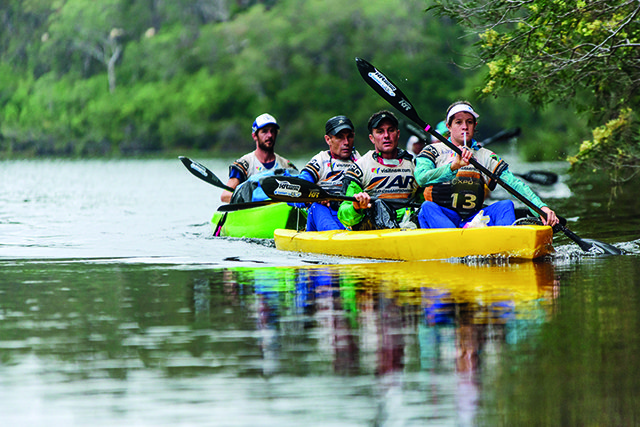EXPEDITION RACING: The Ultimate Test Of Human Endurance
Expedition racing is considered the ultimate test of human endurance. South African team Painted Wolf came fourth at the 2016 Adventure Racing World Championship (ARWC). What can we learn from their experience? – By Lisa Nevitt
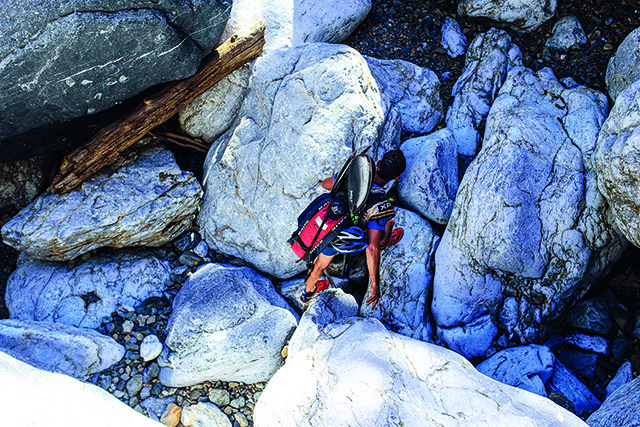
Midnight. South African team Painted Wolf were on the 10th stage of the 2016 Adventure Racing World Championship (ARWC) in Australia – a 627km course involving 14 stages of expedition-length adventure racing.
They had just finished an onerous trekking leg, and it had been a long time since they’d slept. The map Painted Wolf had been given was rudimentary – the sketches only told them approximately where an entrance to the cave was, and there were a few. The foursome plumped for the nearest one, which turned out to be one of the most difficult.
They slithered through a tiny hole in the ground, which opened up into a chamber. While it was five metres deep, the walls were so narrow the team could use neither arms nor legs to move. Instead, they wriggled like worms, crawling through mud caused by heavy rain.
If anything were to go wrong, who would find them there?
Team member Andre Gie stopped suddenly, gripped by panic. He told his teammates, brothers Mark and John Collins, that he couldn’t continue.
What that tells us is that Gie is just as vulnerable as the rest of us. It’s what he did next that sets him apart. Gie gathered himself, carried on, and crossed the finish line in fourth place. He and his teammates had produced the best result for a South African team. They had been racing for 100 hours and 25 minutes, on some of the most inhospitable terrain imaginable. During that time they’d had only four hours of sleep.
Basically, that’s like doing the Comrades, the Cape Town Cycle Tour and the Dusi Canoe Marathon, back-to-back, off-road, three times over.
Ask yourself: would you have the guts to continue inching your way through that frightening cave? Would you consider entering ARWC in the first place?
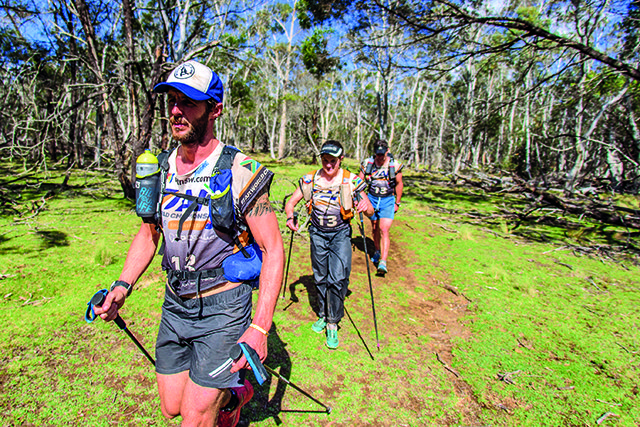
Gie and his teammates aren’t content with pushing the limits of their stamina and strength alone. By testing their ability to feed, hydrate, and motivate themselves beyond the limits of human endurance, adventure racers do what most consider inconceivable.
What is adventure racing?
A non-stop race punctuated by a series of checkpoints. It involves a series of different sports, depending on the terrain: trail-running, trekking, mountain-biking, canoeing, rope progression, climbing, caving, abseiling and crossing glaciers with crampons, to name but a few. The classic team formation is four people, and at least one of them must be of the opposite gender.
That’s not only awe-inspiring – anyone contemplating a long-distance race can learn a lot from them.
1. YOU CAN’T WING IT
The foursome (which included elite trail runner and canoeist Robyn Owen) were exposed to a variety of outdoor pursuits from an early age.
“We’re able to move quickly over technical terrain, whether that’s on foot, on a mountain bike, or in a white-water canoe,” Mark explains.
The ability to survive in extreme conditions was also instilled early. Mark went adventuring in the Drakensberg when he was 17. He found himself caught in waist-deep snow, a full day’s hike away from civilisation. He was alone, he had lost his shoes, and he didn’t have the right gear with him.
One of the symptoms of hypothermia is that you stop caring, and all you want to do is rest. The only way Mark survived was by remembering his schoolmaster’s words: “Keep moving, because if you lie down and go to sleep, you’ll die.”
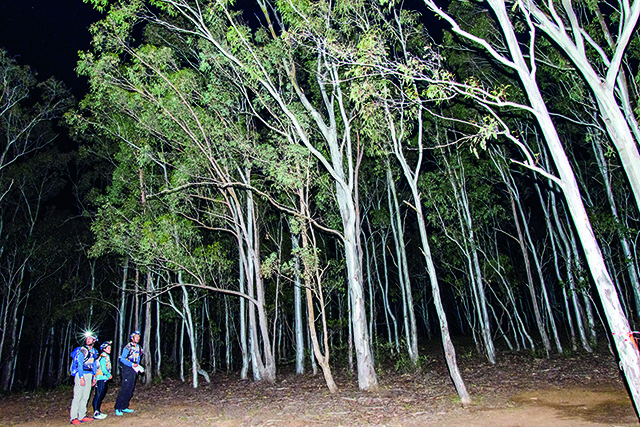
Mark took refuge in a cave until the snow cleared, three days later. Thankfully, he survived the ordeal – but he did learn a valuable lesson about the necessity of carrying the right gear.
Becoming one of the world’s best adventure-racing teams took a lifetime of exposure, and many hours of preparation. Over five months, Painted Wolf trained for 15 hours a week, including a three- to seven-hour trail run or mountain trek, and a four- to nine-hour mountain bike at the weekend. The team also simulated race conditions by carrying the backpacks they intended to use, and training in similar weather and on similar terrain. (Think that’s crazy? The winning team at ARWC, Seagate from New Zealand, revealed they’d been training for up to 30 hours a week!)
To make a commitment of this magnitude, Mark acknowledges sacrifices have to be made in other areas. “It’s always a juggle, a huge demand, and it’s not always easy to find balance. But because my loved ones encouraged me to push myself outdoors from an early age, they understand that working towards achieving a goal makes me a happier person – and in turn, a better contributor towards my family and work.”
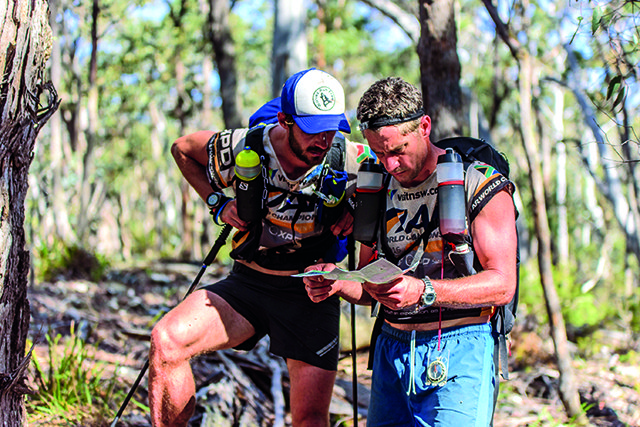
2. EXPERIENCES ARE BEST SHARED
Expedition-racing teams often find themselves in situations that place tremendous stress on the body and mind. Seemingly everyday emotions are amplified in the wilderness, and sharing the experience with others brings you as close as you’ll ever get to anyone.
“We share a lifelong bond, like soldiers going to war,” explains Gie.
The relationship between brothers Mark and John is honest: enough to understand each other’s strengths and weaknesses, and enough to lose their temper when they feel irritable.
Collectively, Painted Wolf have years of adventure-racing experience. During the paddling section at ARWC, Owen sat at the helm of their fat, slow boat, steering it through rapids in a low river. Winds of up to 80km/h whipped up the spray, drenching her. But Owen expertly avoided large rocks, picked the lines and advised when to speed up and when to slow down. Her teammates observed the subtleties of what she was doing on the water, and tried to emulate her skills.
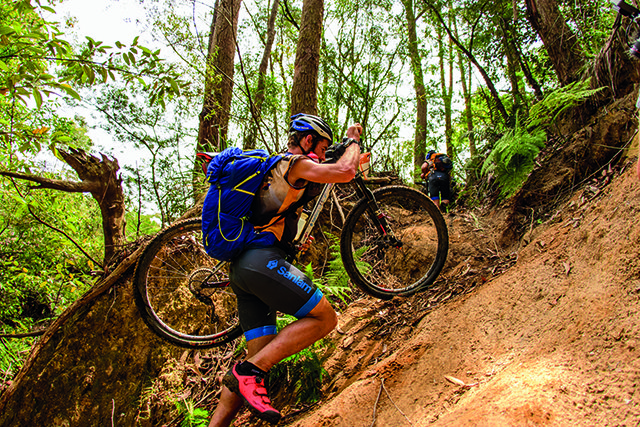
3. PACE YOURSELF
In order to last 100 hours at ARWC, Painted Wolf moved forwards constantly, and at a steady pace. They didn’t even stop to eat or change clothing.
“When my heart rate rose too high, I asked my teammates to slow down, carry my backpack, or tow me on the bike,” recalls Owen.
During the mountain-biking section, the team made a navigational error that saw them plummet to 26th place.
“Race organisers had given us maps that were not to the scale we’re used to. At the time we were cycling in the dark, which made the details even more difficult to make out,” John explains. “We missed a turning, and ended up cycling 2.5km in the wrong direction, and losing 25 or 30 minutes.
“To minimise our mistakes, we took a more conservative approach to navigation, slowing down to get our bearings when we weren’t sure of the way.”
Ordinarily, it isn’t wise to sleep until the second night: on the first night you’re full of adrenaline, and at that stage you probably don’t need it anyway. But recognising his team was tired and lacked motivation, leader Mark called a 30-minute sleep early on in the race, at around 6pm on the second night. And it paid off: a flawless mountain-biking section followed, and the team climbed 12 places.
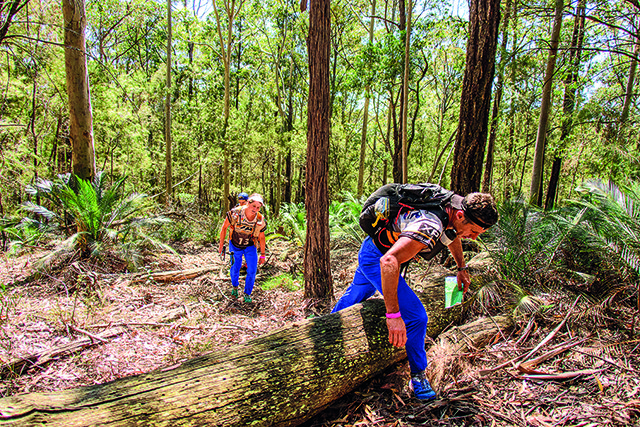
4. HANG IN THERE
In any race, no matter what distance, there are times when you feel low on energy: that you can’t possibly take another step, and you want to cry and give up. But there are other times when you feel relaxed – even euphoric.
“Everybody’s feet hurt halfway into the race,” Owen explains. “A mountain-bike section we did involved lots of pushing, so we had to hike in our bike shoes. The next leg was a long trekking leg. When I took my shoes off for the next biking leg, the soles of my feet were delaminated.
“But I kept telling myself we had another paddling leg coming up, where we could put our feet up. Sometimes all it takes is an amazing view to trigger a positive feeling. You’ve been racing for two days straight, and yet you feel surprisingly good.”
What is the Adventure Racing World Championship (ARWC)?
The Adventure Racing World Series takes place around the world. Painted Wolf qualified by becoming one of the top two teams at Expedition Africa, held last May. The ARWC is then hosted by one of a series of 11 aligned international events. The 2016 ARWC took place in Australia.
Distance: 700km
Max altitude: 1 800m
Duration: 5-12 days of non-stop racing
Disciplines: Trekking, mountain-biking, orienteering, paddling and rope progression
Terrain: Bush, mountains and rivers
Competition: 100 of the world’s best teams
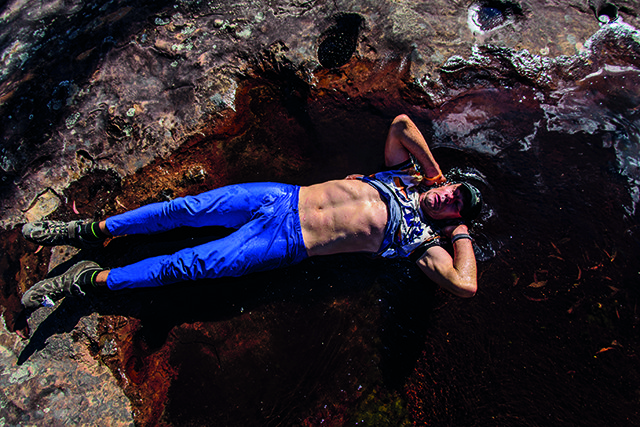
5. CARRY THE RIGHT GEAR
Think trail-running race organisers’ lists of compulsory gear are over the top? Consider this: if you go for an hour-long run in the city and it gets cold, you’re never too far away from a place where you can seek refuge. It’s when you’re further away from civilisation that having the right gear to keep you warm and dry becomes important.
“If you have to stop moving through the wilderness – eg for a sprained ankle – you get very cold, very quickly,” Owen explains. “The possibility of developing hypothermia is real.”
That’s why not having the right gear to keep her warm during the ferocious paddling section could easily have killed her.
Comfort beats style: on a short-distance run, you can probably get away with wearing inappropriate footwear – you can run through the blisters and agony. But once the soles of your feet are gone during a long-distance race, there’s nothing you can do about it.
When Mark began the trekking section at ARWC, he realised he’d forgotten to pack his trail-running shoes into the right box. This meant he had to run most of it wearing cycling shoes. His feet took a battering, and in order to preserve them the team had to adopt a slower pace, particularly when running downhill.
6. EAT RIGHT
Ultra-distance athletes are more at risk of severe dehydration and gastrointestinal distress than any other injury. Which is why correct nutrition is vital during any long-distance race.
“To assume that just because you feel fine in the first 30 minutes of your race, you don’t need to eat, is a rookie mistake,” warns John. “Start eating early, and constantly, otherwise you’ll have to play catch-up.
“I’ve seen teammates start vomiting after 12 hours of racing, because they can’t keep their food down.”
What you eat is just as important as how often you eat it. Painted Wolf ate fruit, bars, nuts and sandwiches, and pre-prepared meals in Ziploc bags that didn’t need to be kept in a fridge. (The team even tucked into lamb shanks while trekking through the wilderness!)
In the last few hours of the race, Mark had picked up a stomach bug from drinking non-purified water, and was struggling to keep his food down. To conserve energy, he would stay in the wind shadow of another cyclist, most often a teammate. During the last leg, an 18-kilometre trail run, his teammates helped him to carry his backpack.
7. YOU ARE CAPABLE OF MORE THAN YOU THINK
Painted Wolf saw three other teams chasing them down on the beach, and realised they no longer had the luxury of sitting back. Despite Mark having felt ill for the last 24 hours, and despite having adventured some 625km, over the final 3km stretch the team ran at 4 mins/km along the coast to the finish line at Ulladulla.
It was nail-biting stuff: they were racing neck-and-neck against French team Naturex. But their opposition blew 800m from the finish, leaving them to clinch fourth place by one minute.
Why? Because the appeal of racing is in that moment when you realise you can do something you’d previously thought inconceivable.
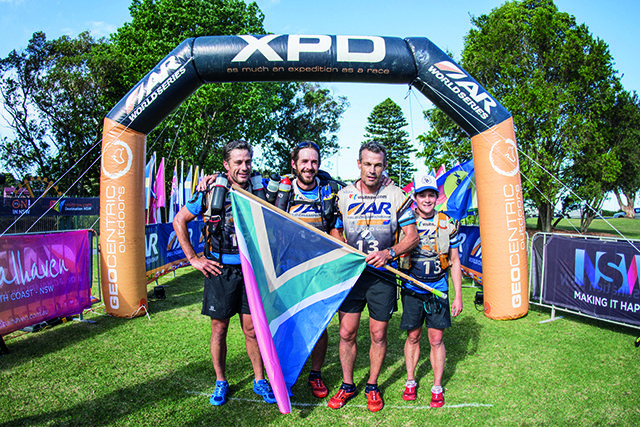
The World’s Longest Running Races
1. Trans-America Footrace, Los Angeles, US: a 5 510km race, from Los Angeles to New York. Takes 70 days to complete.
2. Self-Transcendence Race, Queens, New York, US: Runners compete for 18 hours a day, running around a city block that measures half a mile (800m). They run until they complete 4 989km.
3. Marathon Des Sables, Sahara Desert, Morocco: 254km across the desert. Temperatures reach 49 degrees. Participants are self-sufficient.
4. The Spartathlon, Athens, Greece: Follows the ancient course of Pheidippides, who ran 250km from Athens to Sparta to get help during a war between the Greeks and the Persians.
5. The Washie 100-Miler, Port Alfred, South Africa: 160km, non-stop between Port Alfred and East London. Cut-off time: 26 hours.
Watch the team in action. > https://www.facebook.com/TeamPaintedWolf/videos/1792370924420962/



